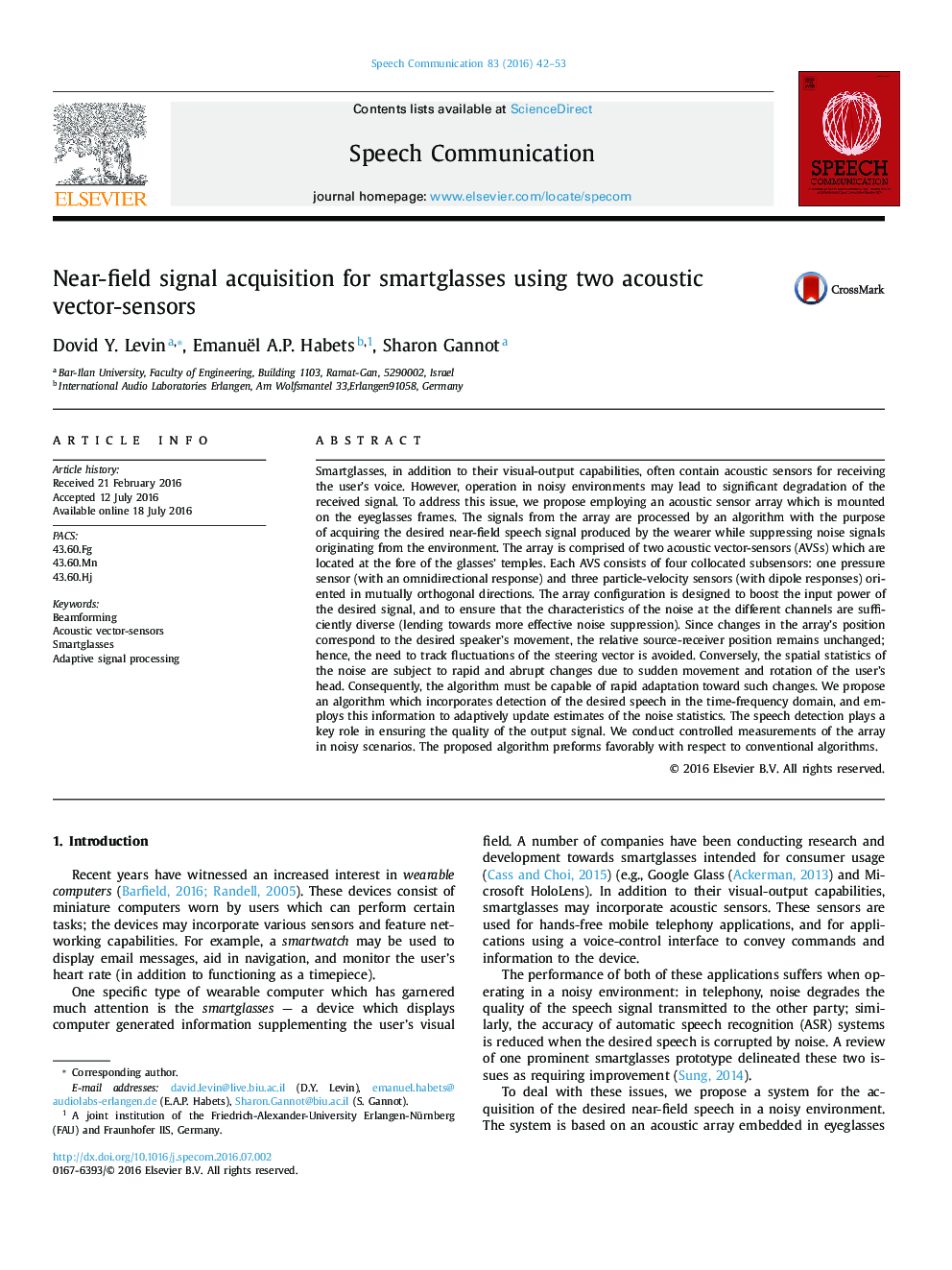| کد مقاله | کد نشریه | سال انتشار | مقاله انگلیسی | نسخه تمام متن |
|---|---|---|---|---|
| 568464 | 1452017 | 2016 | 12 صفحه PDF | دانلود رایگان |
Smartglasses, in addition to their visual-output capabilities, often contain acoustic sensors for receiving the user’s voice. However, operation in noisy environments may lead to significant degradation of the received signal. To address this issue, we propose employing an acoustic sensor array which is mounted on the eyeglasses frames. The signals from the array are processed by an algorithm with the purpose of acquiring the desired near-field speech signal produced by the wearer while suppressing noise signals originating from the environment. The array is comprised of two acoustic vector-sensors (AVSs) which are located at the fore of the glasses’ temples. Each AVS consists of four collocated subsensors: one pressure sensor (with an omnidirectional response) and three particle-velocity sensors (with dipole responses) oriented in mutually orthogonal directions. The array configuration is designed to boost the input power of the desired signal, and to ensure that the characteristics of the noise at the different channels are sufficiently diverse (lending towards more effective noise suppression). Since changes in the array’s position correspond to the desired speaker’s movement, the relative source-receiver position remains unchanged; hence, the need to track fluctuations of the steering vector is avoided. Conversely, the spatial statistics of the noise are subject to rapid and abrupt changes due to sudden movement and rotation of the user’s head. Consequently, the algorithm must be capable of rapid adaptation toward such changes. We propose an algorithm which incorporates detection of the desired speech in the time-frequency domain, and employs this information to adaptively update estimates of the noise statistics. The speech detection plays a key role in ensuring the quality of the output signal. We conduct controlled measurements of the array in noisy scenarios. The proposed algorithm preforms favorably with respect to conventional algorithms.
Journal: Speech Communication - Volume 83, October 2016, Pages 42–53
